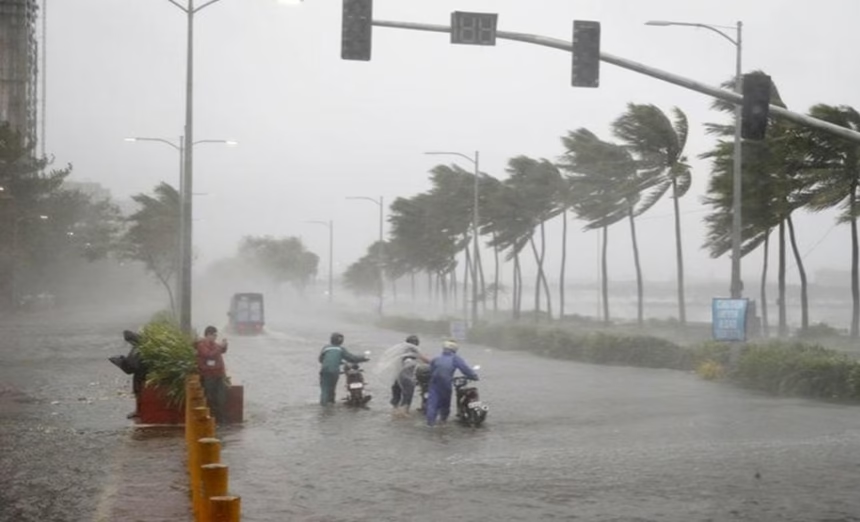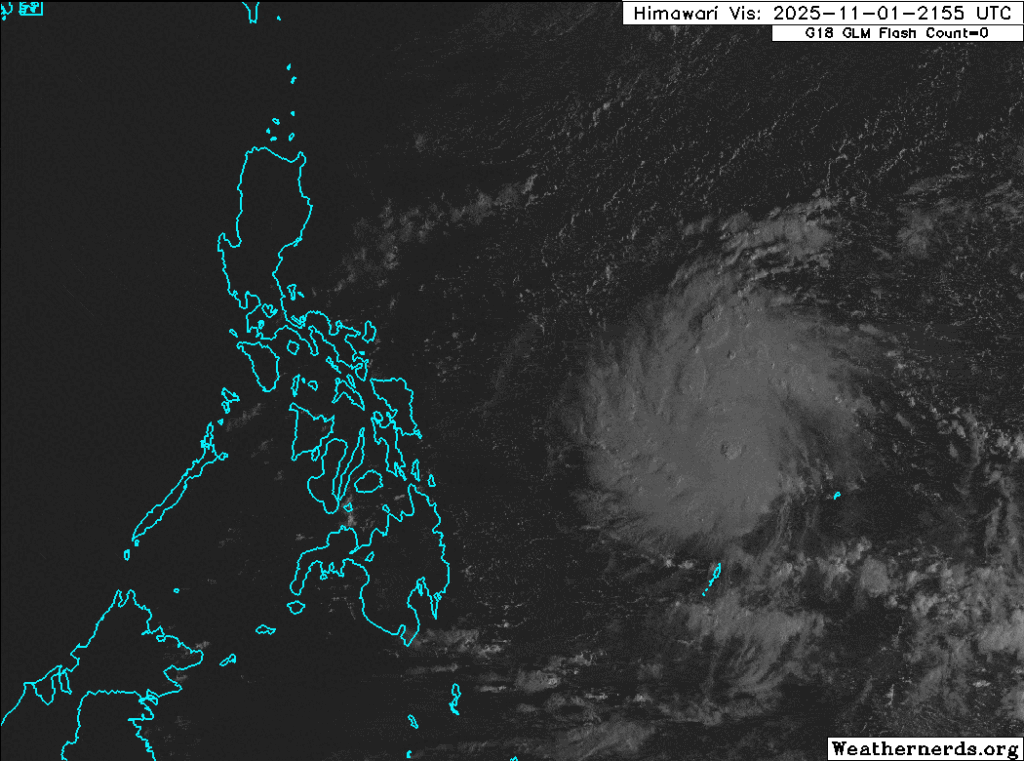MANILA — Typhoon Tino, the 20th tropical cyclone to strike the Philippines this year, tore through Eastern Visayas and Caraga before dawn on Tuesday, leaving a swathe of wreckage in its path.
Packing sustained winds of up to 150 kilometres per hour, with gusts near 165 kph, the system, known internationally as Kalmaegi, came ashore in Silago, Southern Leyte, at midnight. Flooded villages, damaged roads and bridges, and urgent calls for relief followed within hours.
By midday, the Philippine Atmospheric, Geophysical, and Astronomical Services Administration (PAGASA) confirmed at least 12 deaths in the worst-hit provinces. Dozens were injured, and more than 150,000 people were forced from their homes.
Satellite images showed a stark eye wall as the storm pushed west from the Philippine Sea, striking flat coastal areas still trying to recover from September’s Super Typhoon Nando.
“We have dealt with storms before, but Tino moved fast and the surge shocked us,” said Silago Mayor Elena Santos over a spotty phone line during rolling blackouts. “Our town needs help, and soon.”

Hardest-Hit Areas
Southern Leyte, Eastern Samar, and Dinagat Islands took the full hit, with Signal No. 4 warnings raised days ahead. In Silago and nearby Maasin City, floodwaters surged up to three metres, sweeping through homes, schools, and rice fields in a few hours. Witnesses spoke of “walls of water” driven by a storm surge that PAGASA warned could reach four metres along the coast.
In Eastern Samar, landslides in Borongan City and Guiuan buried roads and cut off remote barangays. “The hillside collapsed, mud and rocks everywhere,” said Raul Mendoza, 52, a fisherman who lost his nipa hut and two boats.
In Dinagat Islands, Siargao, and Bucas Grande bore the scars of Signal No. 4 winds, with coconut trees snapped clean and power lines torn down. Tourists and locals crowded evacuation centres, trading stories of rescue and loss, from neighbours carrying stranded elders to safety, to families returning to ruined homes.
Caraga’s Surigao del Norte also suffered, as feeder bands dumped 200 millimetres of rain in under half a day. Rivers rose fast, with the Surigao nearing overflow. In Pacifico, Dinagat, a fishing family of four died while attempting to evacuate at midnight. “These are people with names and families, not just numbers,” said DSWD Secretary Luningning Reyes at a briefing in Tacloban. “Teams are deployed across the region, but the needs are massive.”
The impact will not end when the waters recede. Mental health workers warn of deep stress in communities that have endured one disaster after another. In Siargao’s tents, children clutch damp toys and stare into the distance, a stark sign of the country’s exposure to stronger storms.
Billions Lost, Long Road to Recovery
Early figures point to soaring losses. The National Disaster Risk Reduction and Management Council (NDRRMC) estimates initial damage at PHP 15.2 billion, about $260 million USD, and expects the total to climb once assessments finish.
Agriculture took the brunt, with more than PHP 8 billion lost as corn, rice, and abaca fields in Eastern Visayas went underwater, raising fears for food supply. In Southern Leyte, where 7 in 10 households rely on farming, up to 50,000 farmers could be without work for months.
Infrastructure also suffered. Damage to roads, bridges, and ports is pegged at PHP 4.5 billion, including a partial collapse on the San Juanico Bridge linking Samar and Leyte, now blocked by debris.
Wide power cuts hit several provinces, and the National Grid Corporation of the Philippines estimates PHP 2 billion to fix downed lines and substations. “This is not just concrete and steel,” said Dr Maria Lopez of the University of the Philippines. “Jobs are gone, schools are shut, and the poorest families feel it most.”
Aid is starting to arrive. The United Nations Office for the Coordination of Humanitarian Affairs has pledged $10 million in relief, and USAID airlifted 20 tonnes of supplies to Tacloban.
At home, President Ferdinand Marcos Jr. released PHP 5 billion from the calamity fund and asked Congress for extra funding. Critics warn about a familiar cycle, with opposition Senator Imee Marcos saying in the Senate that rebuilding through loans only to see new storms undo the work is not sustainable.
Typhoon Tino Path, Vietnam on Alert
Tino continues west, with its core crossing the Visayas and heading towards northern Palawan by Wednesday afternoon. PAGASA forecasters in Quezon City expect winds to ease to around 130 kph as the system moves over Panay and Negros, but it will still bring dangerous conditions.
Rainfall of 100 to 200 millimetres per day could trigger more flash floods, and lahars near active volcanoes such as Kanlaon in Negros Occidental remain a risk.
By Thursday morning, 6 November, Tino is forecast to leave the Philippine Area of Responsibility over the West Philippine Sea, then veer northwest towards central Vietnam. Warmer waters in the Gulf of Tonkin could help it regain strength before a possible impact on Hanoi and the Red River Delta by Friday.
“The threat continues, and preparation must move with it,” said PAGASA chief Vicente Malano.
From newsroom desks in Manila to flooded streets in Leyte, Tino’s impact is a stark reminder of life on the Pacific Ring of Fire, where the country meets around 20 typhoons each year.
With this year’s count already reached, communities know the drill all too well. As clean-up teams get to work under low clouds, one Silago resident put it plainly: “We bend, but we do not break, not yet.”
















